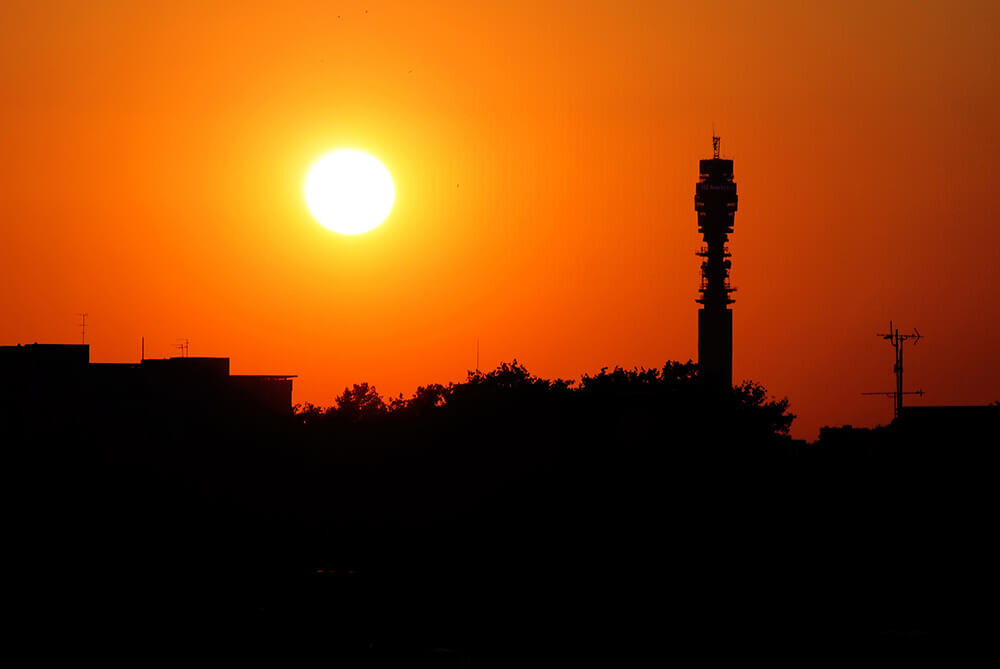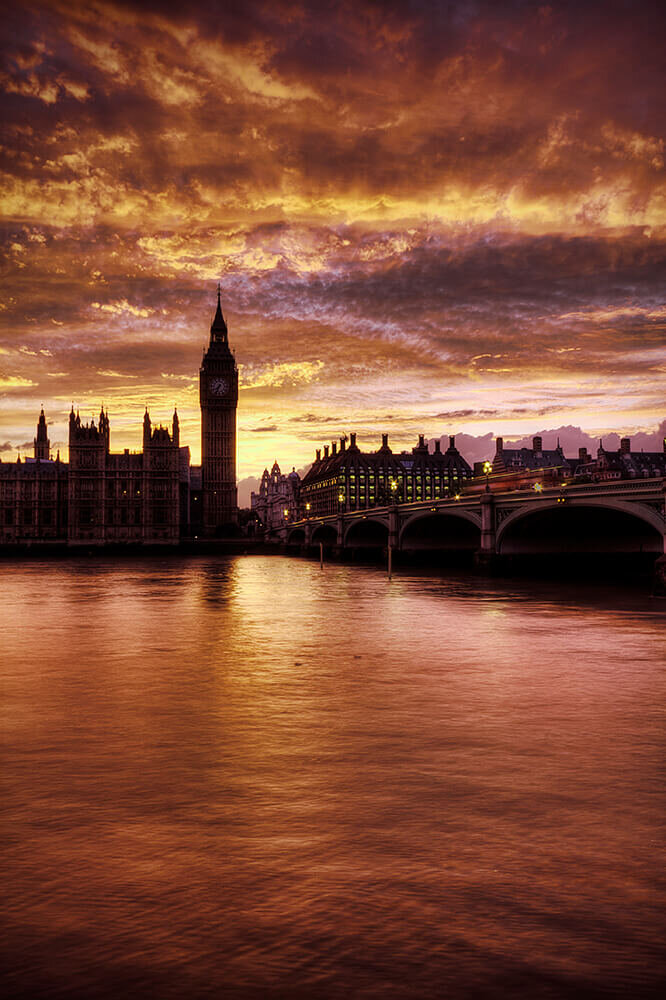You may be have been wondering what is considered golden hour photography.
The golden hour is that fleeting moment on certain days when the sun rises or sets. It is that short moment when the light is most golden and somehow much kinder and softer than at, for example, midday when the light is harsh and a little too powerful. Another benefit of the golden hour are elongated shadows, stretching as far as they can. This can be a very effective and strong element in any photographic composition.
It may sound obvious but golden hour requires the sun to be visible to be effective, there is no golden hour on a fully overcast day.
Partial cloud coverage is still welcome if you are shooting landscape photography or any other genre of photography which showcases the sky since they add a lot of visual interest and can yield spectacular sunrises or sunsets. Empty blue skies don’t produce anywhere near as good results.
To improve your photography, simply going out to shoot at the right time of the day can make all the difference. I would therefore recommend trying to aim for late in the day or early in the morning for the best results as opposed to going out to shoot at 12 o’clock when the sun is just a bit much. The bonus is you also have fewer people around!
I think golden hour photography is certainly not over-rated and is in fact a photographer’s best friend.
Golden hour photography tips and examples:
Let’s have a look at some golden hour photography examples I shot over the years and I’ll also give you some golden hour photography tips and ideas.
Using Golden Hour to generate silhouettes:
In this example by shooting these two children essentially backlit, as the sun’s reflection in the water is coming from behind them), we photograph silhouettes of them and the rocks they are standing on.
This reduces detail in the photograph and makes it more minimal, easier to digest in a way. Capturing silhouettes of people also has the added benefit of not showing their faces/identity which can at times have legal implications for commercial use.
(read how to take sihouette photos for more tips and ideas)
In the example below the warm glow of the sun, the light also comes from behind the subject, in this case the London skyline and BT Tower.
This yields a more minimal dual-tone landscape photograph of London with the outline only really visible.
Shooting during the golden hour for lens flare and other lens aberrations (deviation of light through the lens)
Taking photographs directly pointing your camera at the sun can create some interesting effects such as lens flare, paired with silhouettes. Just be a little careful not to stare at the sun directly as it will eventually damage your eyes slowly but surely, not great!
Capturing the sunset / sunrise
Golden hour can be early morning or late in the day, this also means sunrise or sunset as effectively it is the golden hour which gives birth to explosions and contrasts of colours and light in the morning or evening sky.
The golden rays of the sun coming from the horizon caress the clouds from beneath whereas before for the entire day it was high above them.
This creates long shadows under the clouds delicately mixed with reds, yellows, oranges and pinks such as in this photo of the Palace of Westminster aka Big Ben.
The photo below features sunset, rain ,rainbow, reflections and golden light. Oh and The Shard Building of course! What more could you want?
Shooting the golden hour in black and white
Golden hour, as much as its name may seem to suggest, needn’t necessarily be shot in colour. Admittedly it is far prettier in colour but if long long looooong shadows are what you crave (and usually what you get during golden hour) then why not try black and white?
The two following images are part of my collection of black and white London street photography.
One last golden hour photography tip:
Most cities and streets are built respecting a North, South, East and West orientation.
Use Google Maps to find a street or avenue which runs from East to West and vice versa. Not only will you get the gorgeous light from the golden hour but also have the sun perfectly aligned with the street you are in. This creates the perfect opportunity for capturing silhouettes and exciting street photography.
I hope these images and tips for golden hour photography will inspire you to go out and shoot more, to explore the possibilities offered by light at different times of the day and times of the year as well.
Until next time,








